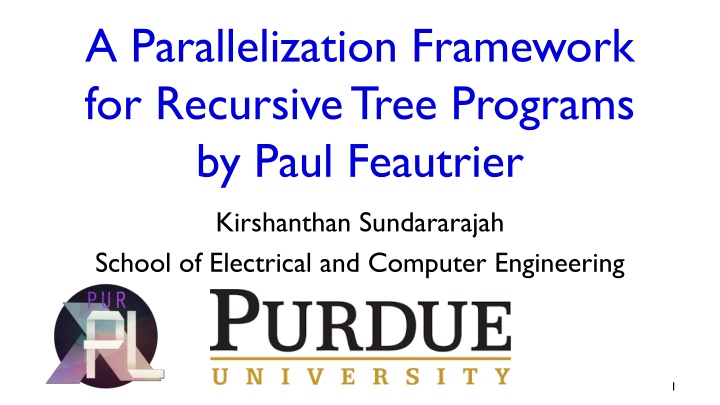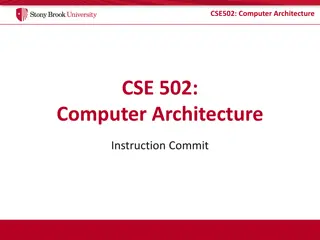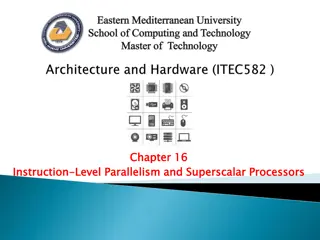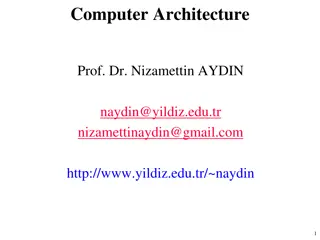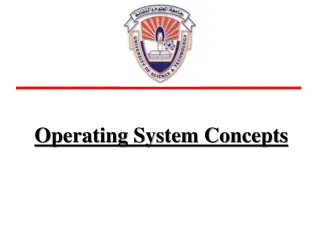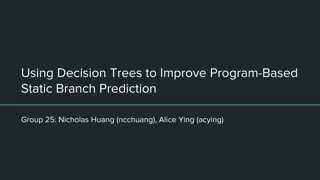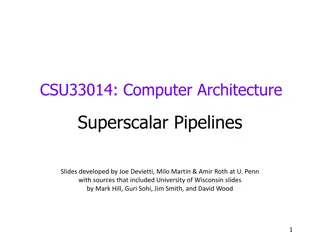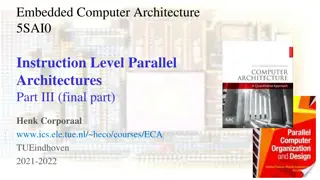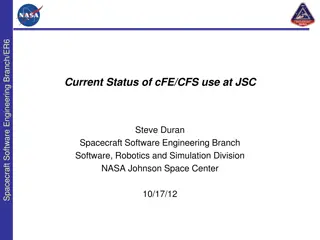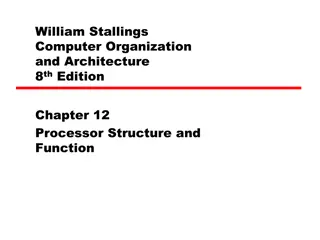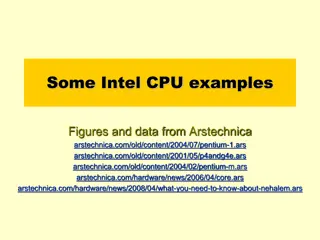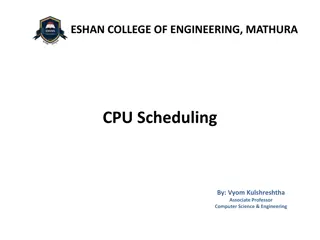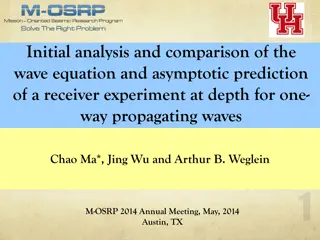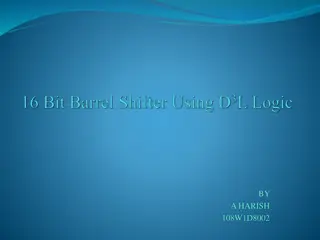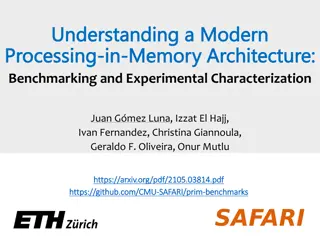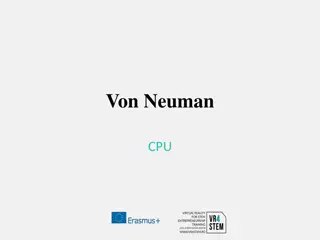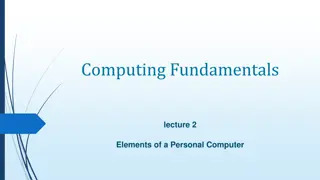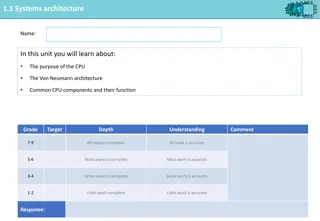Modern CPU Core Architecture: Superscalar, Branch Prediction, Out-of-Order Execution
This review delves into the advanced features of modern CPU cores including superscalar pipelines, branch prediction, out-of-order execution, and sophisticated memory hierarchies. Explore the implications of these architectural elements on software performance, focusing on concepts like temporal and spatial locality, dependence, and semantically equivalent programs. Gain insights into loop optimizations for achieving higher performance, with a spotlight on affine loops and array accesses.
Download Presentation

Please find below an Image/Link to download the presentation.
The content on the website is provided AS IS for your information and personal use only. It may not be sold, licensed, or shared on other websites without obtaining consent from the author.If you encounter any issues during the download, it is possible that the publisher has removed the file from their server.
You are allowed to download the files provided on this website for personal or commercial use, subject to the condition that they are used lawfully. All files are the property of their respective owners.
The content on the website is provided AS IS for your information and personal use only. It may not be sold, licensed, or shared on other websites without obtaining consent from the author.
E N D
Presentation Transcript
A Parallelization Framework for Recursive Tree Programs by Paul Feautrier Kirshanthan Sundararajah School of Electrical and Computer Engineering 1
Regular Vs Irregular Programs Arrays Vs Pointers Iteration space, data space, execution order, dependence Finding parallelism depends on our ability to answer questions about the associated Z-polytopes. Is it possible to construct such a framework for irregular programs? 2
Polytope Model Iteration Vector Bounds Scanning a Polytope for(i=0; i < N; ++i) for(j=0; j < i; ++j) S; 3
Definition of Dependence Two operations are dependent if they access the same memory cell, one at least of the two accesses being a write. 4
Contributions Control Domain of Tree Programs Locations and Function From Location to Values Address Functions 5
Toy Language Tau No pointers are allowed. They are replaced by addresses. The only data structures are scalars and trees. Trees are always global. No function returns an address. The only control structures are conditionals function calls 9
Dependence Analysis in Tau Parallelization Model: Control Parallelism and Data Parallelism 10
Synthetic Dependence Graph Consider a function foo and the statements {S1, S2 .., Sn} of its body. There is a dependence edge from Si to Sj, i < j iff there exists three iteration words u, v, w such that, u is an iteration of foo. Both u.i.v and u.j.w are iterations of some terminal statements Sk and Sl. u.i.v and u.j.w are in dependence. 11
Synthetic Dependence Graph Parallelization: Topological Sorting of SDG The Dependence Test (Algorithm D) 12
Conclusion and Future Work Data Structures are restricted to trees Operations on the addresses are limited to postfixing The analysis is operation oriented, meaning that addresses are associated to operations, not to statements. This allows to get more precise results when computing dependences. 14
Conclusion and Future Work Trees of arrays extension for multigrid method Extending to DAGs and Cyclic Graphs by prefix operator. 15
A Parallelization Framework for Recursive Tree Programs by Paul Feautrier Kirshanthan Sundararajah School of Electrical and Computer Engineering 16
